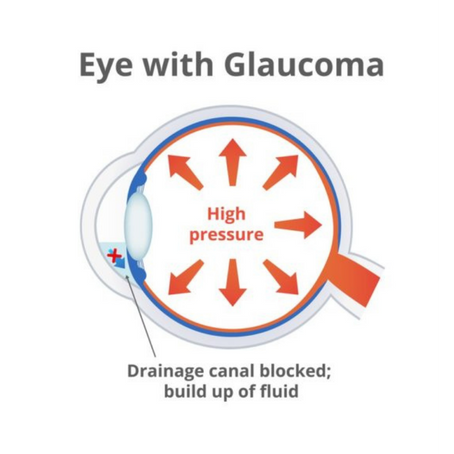Search
Search
Glaucoma is a condition that often progresses without leading to any symptoms in the beginning. As a result, this is a condition that can progress unchecked. This is also the leading cause of vision loss and blindness in the elderly. Millions of people likely have this condition and don’t even realize it. It is important to rely on trained eye doctors in Arizona to diagnose and treat this condition.
Glaucoma is a condition that develops due to abnormal pressure behind the eye. A glaucoma specialist can use a tool to check the pressure behind each eye individually and help glaucoma patients treat it. In glaucoma, the optic nerve is damaged. This is a nerve that connects the brain to the eyes, enabling the brain to interpret signals that come from the eyes. This damage usually comes from elevated eye pressure caused by increased fluid production or reduced drainage.
When someone suffers from glaucoma, this condition progresses gradually. In the beginning, there might not be any symptoms at all. As a result, this condition might get worse and people don’t even know it. This is what makes it so dangerous and why early detection is important.
The team at Swagel Wootton can help diagnose this condition and provide treatment quickly. Our goal is to detect and treat this condition before it compromises someone’s vision. Even though there might not be a cure for this condition, we have ways to control it.
Glaucoma is a condition that often progresses without leading to any symptoms in the beginning. As a result, this is a condition that can progress unchecked. This is also the leading cause of vision loss and blindness in the elderly. Millions of people likely have this condition and don’t even realize it. It is important to rely on trained eye doctors in Arizona to diagnose and treat this condition.
Glaucoma is a condition that develops due to abnormal pressure behind the eye. A glaucoma specialist can use a tool to check the pressure behind each eye individually and help glaucoma patients treat it. In glaucoma, the optic nerve is damaged. This is a nerve that connects the brain to the eyes, enabling the brain to interpret signals that come from the eyes. This damage usually comes from elevated eye pressure caused by increased fluid production or reduced drainage.
When someone suffers from glaucoma, this condition progresses gradually. In the beginning, there might not be any symptoms at all. As a result, this condition might get worse and people don’t even know it. This is what makes it so dangerous and why early detection is important.
The team at Swagel Wootton can help diagnose this condition and provide treatment quickly. Our goal is to detect and treat this condition before it compromises someone’s vision. Even though there might not be a cure for this condition, we have ways to control it.
In the beginning, there might not be any symptoms at all. Over time, the symptoms may start to appear. Some of the most common symptoms of glaucoma include:
Anyone with these symptoms needs to see a doctor as quickly as possible.

There are a few people who are at a higher risk of glaucoma. Some of the most common risk factors include advanced age, those with a family history of this condition, individuals who have developed diabetes, and those who have to take steroids. Glaucoma also tends to be more prevalent in African American and Hispanic populations. Anyone who falls into these categories must make sure they receive regular eye exams.
If you are looking to learn more about glaucoma, then you should reach out to us today to learn more about the Phoenix glaucoma treatment options we provide. Call us today to schedule an appointment with a member of our team. We are here to help you protect and preserve your vision with expert Phoenix glaucoma treatments.
Eye care professionals can diagnose glaucoma in a variety of ways. These methods may include:


Swagel Wootton’s Dr. Lance Stutz, MD is a comprehensive ophthalmologist and glaucoma treatment expert. Swagel Wootton provides industry-leading care using the latest, advanced technology and techniques, including FDA-approved Durysta®.

My patient care philosophy is that the patient should always come first.
Treatment options vary substantially depending on the type of glaucoma and the stage the disease is in. For many patients, prescription eye drops are sufficient, but some patients will need systemic medications and/or glaucoma surgery. Our Arizona eye specialists have extensive surgical experience with glaucoma patients of all types.
Swagel Wootton Eye Institute glaucoma treatments include: